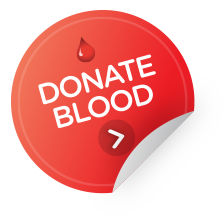Anaemia occurs when there are too few red blood cells or not enough haemoglobin in the blood. Haemoglobin is an iron-containing compound found in the red blood cells, which transports oxygen around the body. The most common type of anaemia occurs when there isn't enough iron in the body.
Iron is absorbed from your food and drink in the intestines. It's carried in your blood to your bone marrow, where blood cells are produced. Here, the iron is combined with proteins to make haemoglobin. Any extra iron can be stored in your liver. Your body also recycles iron from old and worn out red blood cells to make new ones.
However, if you have a shortage of iron in your body, your bone marrow will make small red blood cells that don't contain enough haemoglobin. These red blood cells can't carry enough oxygen to your organs and tissues. This leads to the symptoms of anaemia.
If your doctor tells you that you have iron deficiency anaemia, you may be advised to increase iron-containing foods in your diet or take iron supplements.
Patient Support Materials
NPS MedicineWise and the National Blood Authority have developed a set of patient support materials for patients who may have iron deficiency anaemia and require surgery.
Fit for surgery, fit for life is an infographic tool and personalised iron plan that sets out the need for optimal iron management in the lead up to surgery. It contains a personal record that patients may want to keep with them to ensure their care team are always fully informed about their iron status.
Managing my iron is a fact sheet outlining the treatments that are available to manage iron. This may be particularly helpful for patients who have been identified as having an iron deficiency.
Fit for surgery is a fact sheet outlining the steps that need to be taken to get fit for surgery. It details the need for investigations and changes in medicine regimens.
My guide to blood transfusions is a fact sheet that explores why patients may need a transfusion, the risks associated with transfusion and what actions they can take to help them avoid needing one.





